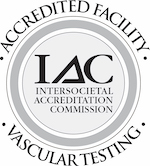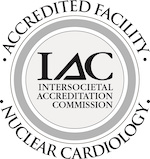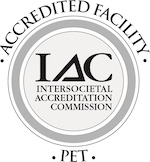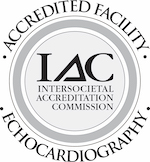Atrial Fibrillation / AFib
Atrial Fibrillation also known as AFib is the most common arrhythmia or irregular heartbeat in the US and around the world. It is estimated to affect over 2.5 million Americans. Normally, the SA node, in the upper right chamber of the heart known as the right atrium, fires off an electrical signal that begins the heartbeat. This is a rhythmic motion that may speed up or slow down depending on the person’s activity or emotional state. During AFib, however, the electrical signal may begin in one or more places other than the SA node. The result is a chaotic and disorganized series of electrical impulses resulting in heartbeats of up to 600 bpm. This exceptionally high heart rate may cause a great deal of distress. Indeed, many patients believe they are having a heart attack and may end up in the emergency room.
However, the symptoms of AFib can begin as mild, moderate or even severe and there is no diagnostic test they can predict how severe the next AFib episode will be. AFib can also be seemingly random and temporary, known as paroxysmal or long lasting known as persistent.
Causes of AFib
The causes of AFib are many and varied and include:
- Obesity and its related diseases
- Congenital heart defects
- Genetics
- Heart attack and coronary heart disease
- Use of drugs, alcohol or smoking
Each of these conditions directly or indirectly increases the likelihood of irregular heart rhythm.
While AFib can cause serious lifestyle impediments, the primary concern of an electrophysiologist is to minimize the risk of stroke which is about five times higher in patients with AFib than those who do not have the condition. This is as a result of blood pooling in the Left Atrial Appendage (LAA) and increasing the chance of a clot. Pieces of clotted blood can eventually break off and travel to the brain and other parts of the body. Left Atrial Appendage Occlusion or Closure is a procedure, often employed alongside AFib treatment, to reduce the likelihood of a stroke by sealing off the LAA from the rest of the heart.
Diagnosis
Diagnosing AFib is not always straightforward. Some patients may have episodes once a year, while others may have them daily. Some episodes may last a few seconds and others for days or weeks on end. Therefore, when most patients with paroxysmal AFib go to their primary care physician for an EKG, nothing is found. This is because an EKG only offers a snapshot of that moment in time – very likely when AFib is not occurring. A consultation with a qualified electrophysiologist is the next step in diagnosing the condition. Oftentimes for patients with paroxysmal AFib, we employ an Event Monitor or Holter Monitor to get longer-term data on heart rhythm. An event monitor is triggered by the patient themselves when they feel an irregularity occurring. The event monitor records the occurrence and the data is transmitted to the electrophysiologist. A Holter monitor records continuously for days, weeks or even months at a time. A Holter monitor is typically a device worn outside of the body with leads connected to the chest.
Modern technology has allowed us to implant monitors for maximal patient convenience. Data points can be transmitted via Bluetooth connection to an external device and the results are sent to the electrophysiologist.
Treatment for AFib
The treatment for AFib usually progresses in a stepped approach. Because lifestyle issues may be a primary cause of AFib, we usually begin with lifestyle change in the form of improved diet and exercise. Many patients who lose a significant amount of weight also find that their AFib improves or resolves entirely.
In the meantime, to reduce the risk of stroke, patients will likely begin a course of anticoagulants, commonly known as blood thinners. This reduces the risk of a stroke by impeding the sticking of blood platelets to one another. However, medical intervention often comes with side effects including extreme fatigue. Anticoagulants, by their very nature, reduce the ability to clot and therefore patients should avoid being bruised or cut.
The definitive treatment for AFib is known as cardiac catheter ablation. This is a minimally invasive catheter-based intervention that involves ablating or destroying the tissue causing the misfire of electrical signals in the heart. By threading a tiny catheter up a vein in the leg and to the appropriate part of the heart, the electrophysiologist can accurately map the heart’s electrical signals and ablate the appropriate heart tissue. The benefits are excellent in patients that qualify with up to 80% success rate. Further, the risks are minimal (and will be discussed at consultation) in the hands of an experienced electrophysiologist.
Bottom line
Atrial fibrillation or AFib is a condition that even in its mildest forms should be treated aggressively to avoid the increase risk of stroke and longer-term heart failure. Beyond that, curative procedures such as the cardiac catheter ablation have an excellent risk profile and success rate and should be considered by patients experiencing lifestyle issues as a result of their heart rhythm disorder.







